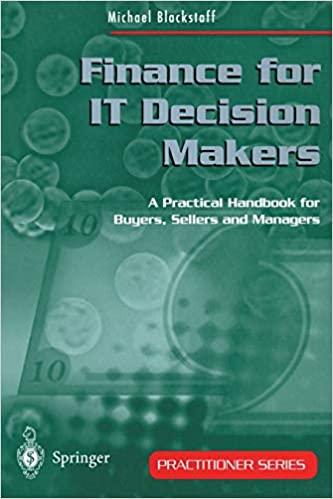Question
The following table gives abbreviated balance sheets and income statements for Walmart. At the end of fiscal 2017, Walmart had 2,965 million shares outstanding with
The following table gives abbreviated balance sheets and income statements for Walmart. At the end of fiscal 2017, Walmart had 2,965 million shares outstanding with a share price of $108. The company's weighted-average cost of capital was about 5%. Assume a tax rate of 35%. Balance Sheet (figures in $ millions) End of Year Start of Year Assets Current assets: Cash and marketable securities $ 6,766 $ 6,877 Accounts receivable 5,624 5,845 Inventories 43,793 43,056 Other current assets 3,521 1,951 Total current assets $ 59,704 $ 57,729 Fixed assets: Net fixed assets $ 114,828 $ 114,188 Other long-term assets 30,050 26,968 Total assets $ 204,582 $ 198,885 Liabilities and Shareholders' Equity Current liabilities: Accounts payable $ 46,102 $ 41,443 Other current liabilities 32,439 25,505 Total current liabilities $ 78,541 $ 66,948 Long-term debt 36,835 42,028 Other long-term liabilities 11,317 12,091 Total liabilities $ 126,693 $ 121,067 Total shareholders' equity 77,889 77,818 Total liabilities and shareholders equity $ 204,582 $ 198,885 Income Statement (figures in $ millions) Net sales $ 500,353 $ 485,883 Cost of goods sold 373,406 361,266 Selling, general, and administrative expenses 95,991 91,783 Depreciation 10,539 10,090 Earnings before interest and taxes (EBIT) $ 20,417 $ 22,744 Interest expense 2,188 2,277 Taxable income $ 18,229 $ 20,467 Tax 4,600 7,163 Net income $ 13,629 $ 13,304 Dividends 6,134 6,705 Addition to retained earnings $ 7,495 $ 6,599 a. Calculate the market value added. (Do not round intermediate calculations. Enter your answer in millions rounded to nearest whole number.) b. Calculate the market-to-book ratio. (Do not round intermediate calculations. Round your answer to 2 decimal places.) c. Calculate the economic value added. (Do not round intermediate calculations. Enter your answer in millions rounded to nearest whole number.) d. Calculate the return on start-of-the-year capital. (Do not round intermediate calculations. Enter your answer as a percent rounded to 2 decimal places.)
Step by Step Solution
There are 3 Steps involved in it
Step: 1

Get Instant Access to Expert-Tailored Solutions
See step-by-step solutions with expert insights and AI powered tools for academic success
Step: 2

Step: 3

Ace Your Homework with AI
Get the answers you need in no time with our AI-driven, step-by-step assistance
Get Started


